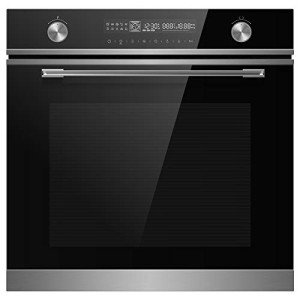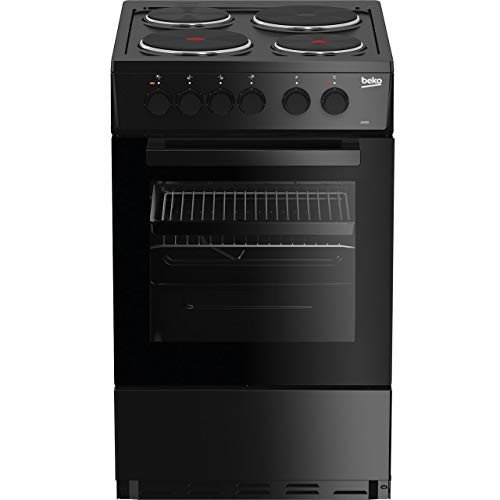11 "Faux Pas" You're Actually Able To Make With Your Hob
페이지 정보
작성자 Adriana 작성일 24-12-23 17:26 조회 4 댓글 0본문
 Which Ovens Hobs Are Right For You?
Which Ovens Hobs Are Right For You? Ovens hobs are a vital kitchen appliance, but it can be a challenge to determine which one is the best for your needs. We'll help make the right decision for you, whether you're considering gas, electric or even induction hobs.
Ovens hobs are a vital kitchen appliance, but it can be a challenge to determine which one is the best for your needs. We'll help make the right decision for you, whether you're considering gas, electric or even induction hobs.The domino hobs come in a variety of styles including ceramic and induction. They provide a plethora of experience when it comes to cooking. Choose between one or two zones of heat and mix the model to meet your requirements. For example, a ceramic section can be combined with a separate one for gas.
Gas
Gas hobs are a crucial kitchen appliance that can be used by professionals as well as cooks at home. This type of hob is known for its ability to speed up and its versatility. It utilizes propane or natural gas to create a flame which heats pots and pans. The design of a gas hob typically has several burners which can be controlled by an adjustable knob that allows you to adjust the intensity of the flame and its temperature. Gas hobs are an excellent choice for delicate cooking techniques like boiling or simmering.
A gas hob can be a sleek addition to any kitchen. Its flat surface makes it easy to clean. Gas hobs are perfect for counters with small spaces since they do not protrude. However, one of the major drawbacks of a gas hob is that it requires access to an LPG (liquefied petroleum gas) pipeline and a dedicated fuel supply, which may increase installation costs.
Gas stoves are made with safety in mind as a top priority. They are equipped with flame failure devices that automatically cut off gas supply when the flame ceases to burn. This feature protects against the possibility of fire or carbon monoxide poisoning, and is especially important in homes with pets or children. Modern hobs also come with automatic shut-offs that stop the flow of gas if there is an unintentional electrical surge or short circuit.
If you are thinking of purchasing gas hobs, make sure to speak with an experienced Gas Safe Registered fitter to ensure that your installation process is handled properly and that your stove complies with all safety protocols. Attempting to install or repair a gas hob yourself could result in fire hazards, leaks, and health hazards.
This is why it is crucial to think about the long-term costs of a hob prior to making a final purchase. For instance an electric hob could be more energy-efficient than a gas-powered hob because it directs heat to your cookware. Many electric hobs come with features like automatic shut-offs or pan detection, making them more secure than gas counterparts.
Induction
The traditional electric and gas cooktops heat via conduction (which is a hot burner that is used to heat the surface of your pan or pot) Induction utilizes electromagnetism to directly heat only the cooking pan. Induction cooktops can be heated quicker, more precisely and efficiently. This also means less energy is wasted because heat is transferred via the magnetic field that surrounds your cooktop instead of a heated resistance coil.
Induction stoves can be tricky to master initially. Induction stoves require cookware with flat bottoms and ferromagnetic properties. Most modern kitchenware is compatible, however older cookware may not work unless you use an induction interface disk. The interface disk is placed on top of your existing cookware and creates an elongated magnetic surface that allows the burner to interact with it. Induction cookers aren't a threat to your hands in the same way as a traditional gas or electric cooktop however they can be hot and could cause burns when you place your hand on the surface for too long.
Another disadvantage is that the cooking surface can't start if your cookware isn't seated on it as an important safety feature to avoid accidental fires and burns. Induction burners aren't able to be accidentally turned on while a pan is cooling. This is not possible with an electric or gas stove.
The good aspect is that induction cookers do not release harmful pollutants into the air when they're shut off, including nitrous oxides, carbon monoxide and formaldehyde, which could worsen respiratory issues. Induction cookers are totally emission-free when they're used in conjunction with renewable energy sources.
The one downside is that induction cooktops may produce a buzzing sound. This is particularly noticeable at higher temperatures and can cause interference with a thermometer for meat that is digital However, you can lessen this by using heavy flat-bottomed pans. The hum isn't a problem but some cooks find it annoying. It is best to try an induction stove prior to making a purchase that's why many appliance stores offer loaners or showroom kitchens where you can test the cooktops out.
Ceramic
The most commonly used type of cooker that is used in UK kitchens is an electric ceramic cooker. They are flush with the worktop, and are clad in glass to give them a sleek modern appearance. They are also easy-to-clean. Their flat surface means that there are no crevices for food to get trapped on and a simple wipe over is all that is required. They come with a range of safety features, including hot indicators that show the time when the zones are hot and locks that stop children from using them.
The pan or cookware is heated electronically through the passage of electricity through the coiled elements underneath the glass that is tempered. Although they are not as efficient as induction or gas, they offer a convenient and affordable method of cooking. They can be prone to scratching if pots and pans are pulled across the kitchen floor, however they do come with shatterproof safety glass.
The flat surface of a ceramic hob makes it quick to heat up and cool down because the heat is transferred through the cookware instead of the whole hob. This makes them easier to use in a hectic home. Ceramic hobs are also known to be a bit more expensive than other types but they are worth the cost for the design and convenience they provide.
It is important to select a kitchen appliance that suits your cooking style and lifestyle. Induction or gas hobs may be better suited to you if you require speed, precision, and energy efficiency. Before deciding on the type of hob that you wish to buy, it is important to take into consideration your budget and cookware. Once you've completed this, you can begin looking for the perfect new stove to complement your oven. Our team of experts is ready to answer your questions. You can contact us by email or phone or visit one of our stores. We have a large selection of products to help you design the perfect kitchen for your home.
Halogen
There's something extremely satisfying about the moment you bring a halogen oven hob in the kitchen, and watching your food rapidly cook under its glowing lid. It's a type of dry-heat, which means that the air or food is heated to high temperatures. Halogen stoves can attain these temperatures faster than conventional ovens.
They also respond better to temperature variations making them suitable for cooking in all types. They are great for frying, roasting and baking however, they can also be used for steaming and steaming. Some models are equipped to grill infrared without the mess and smoke of charcoal.
A halogen oven with hob heats up much faster than conventional ovens. It also gets to the maximum temperature much faster. The power is shut off when it reaches the temperature required, so there's no chance of overheating. The lid is designed to hold the heat and evenly distribute it to make the food perfectly brown.
Halogen ovens are typically less expensive than a traditional oven and can be purchased for less than PS40. They can be used to fry, steam and even the rotisserie. Many models have a glass dish, which allows you to check the food more easily and stops it from burning.
Halogen ovens have some disadvantages. For example bulbs may have to be replaced after a set period of period of time. Some models have weak stands that are easily smashed by children or pets.
Another issue that could be a concern is that halogen ovens could generate harmful byproducts in the heating process. These are known as 'process pollutants and include acrylamide polycyclic aromatic hydrocarbons (PAHs) and heterocyclic amines (HCAs), and they can cause cancer in humans. If you follow the directions and use a non-stick pot and oven, you can significantly reduce the risks. These risks are usually highlighted on the warning label of the halogen ovens. It is essential to read the label carefully prior to using this appliance.
- 이전글 Why All The Fuss About Best Ovens?
- 다음글 You'll Never Be Able To Figure Out This Amazon Bedside Cot's Secrets
댓글목록 0
등록된 댓글이 없습니다.






